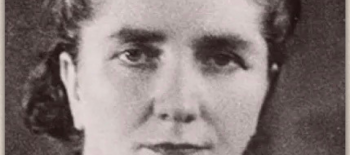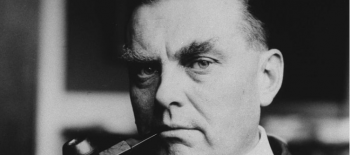April 3, 2024 – September 22, 2024
Group Exhibition | Dallas Contemporary | 161 Glass St, Dallas, TX 75207
Friday, April 5 | at 1:00 PM
Dallas Contemporary | 161 Glass St, Dallas, TX 75207
Art talk with Karolina Jabłońska hosted by Dallas Contemporary adjust curator and the “Who’s Afraid of Cartoony Figuration?” curator Alison M. Gingeras.
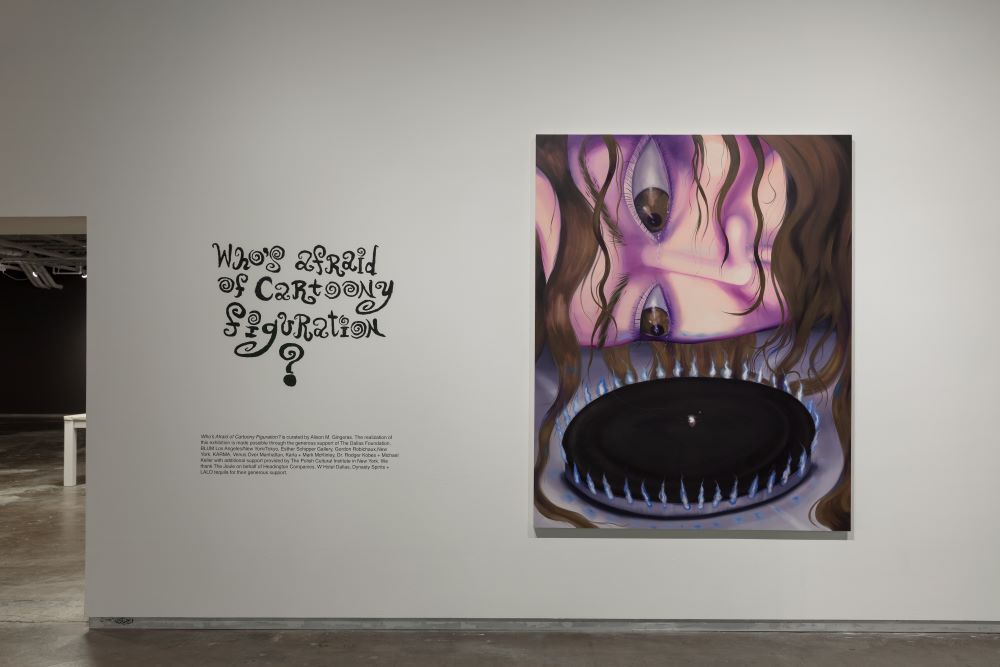
“Karolina Jabłońska is making waves in the art world with her vibrant and thought-provoking works. Known for her expressive and cartoony figuration, Jabłońska’s paintings delve into themes of visibility, gender politics, and the intricacies of everyday life. As part of the ongoing exhibition Who’s Afraid of Cartoony Figuration? at Dallas Contemporary, curated by Alison M. Gingeras, Jabłońska brings a unique perspective that challenges and engages viewers. In this Q&A, she opens up about the inspirations behind her recurring protagonist, her exploration of socio-political themes, and the significance of domestic settings in her art.” — Summer Treat: See Karolina Jabłońska’s Punchy Paintings, Patron Magazine, July 11
###
Who’s Afraid of Cartoony Figuration? is a multi-dimensional group exhibition, curated by Adjunct Curator Alison M. Gingeras, will be on view April 3 – September 22, 2024. The show presents works by contemporary artists Karolina Jabłońska, Sally Saul, Tabboo! and Umar Rashid that dare to mix the levity of cartoons, comics, and commercial illustration with some of the most pressing socio-political subjects of our day.
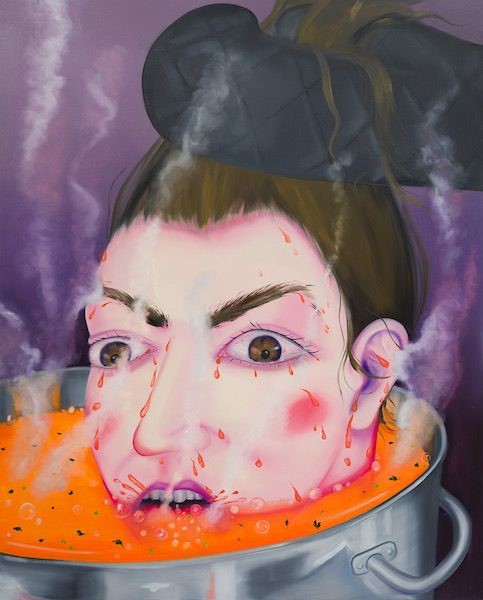
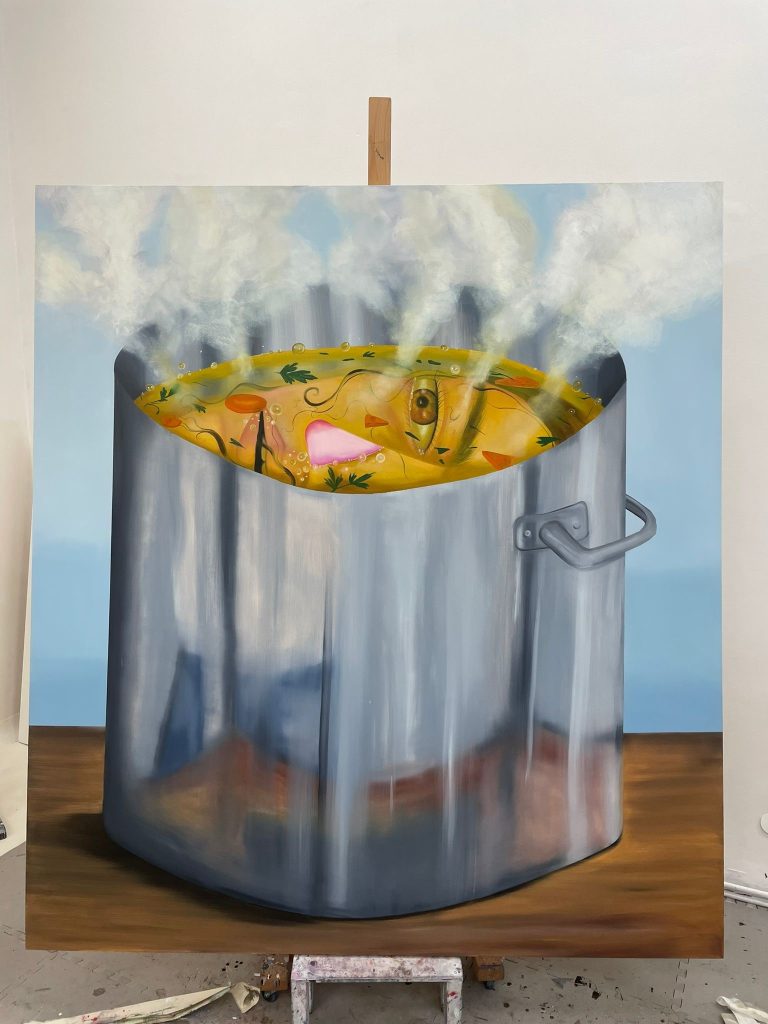
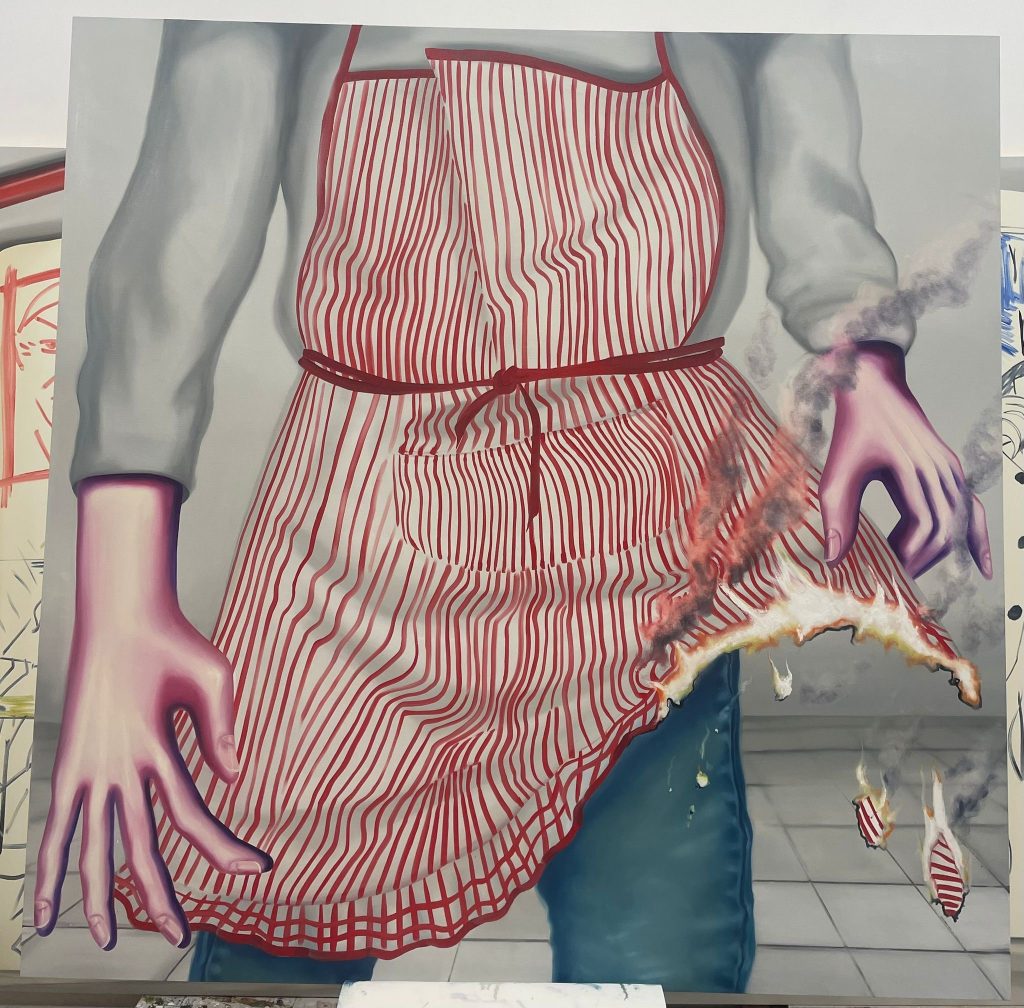
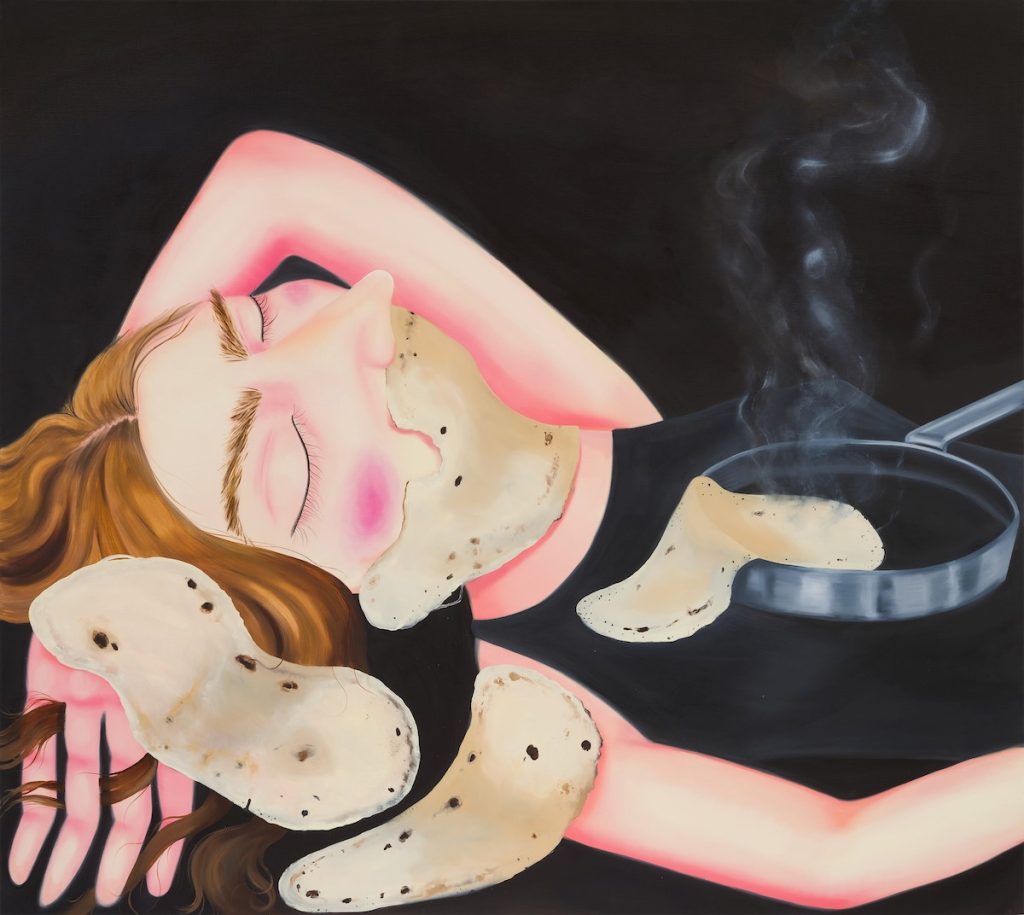
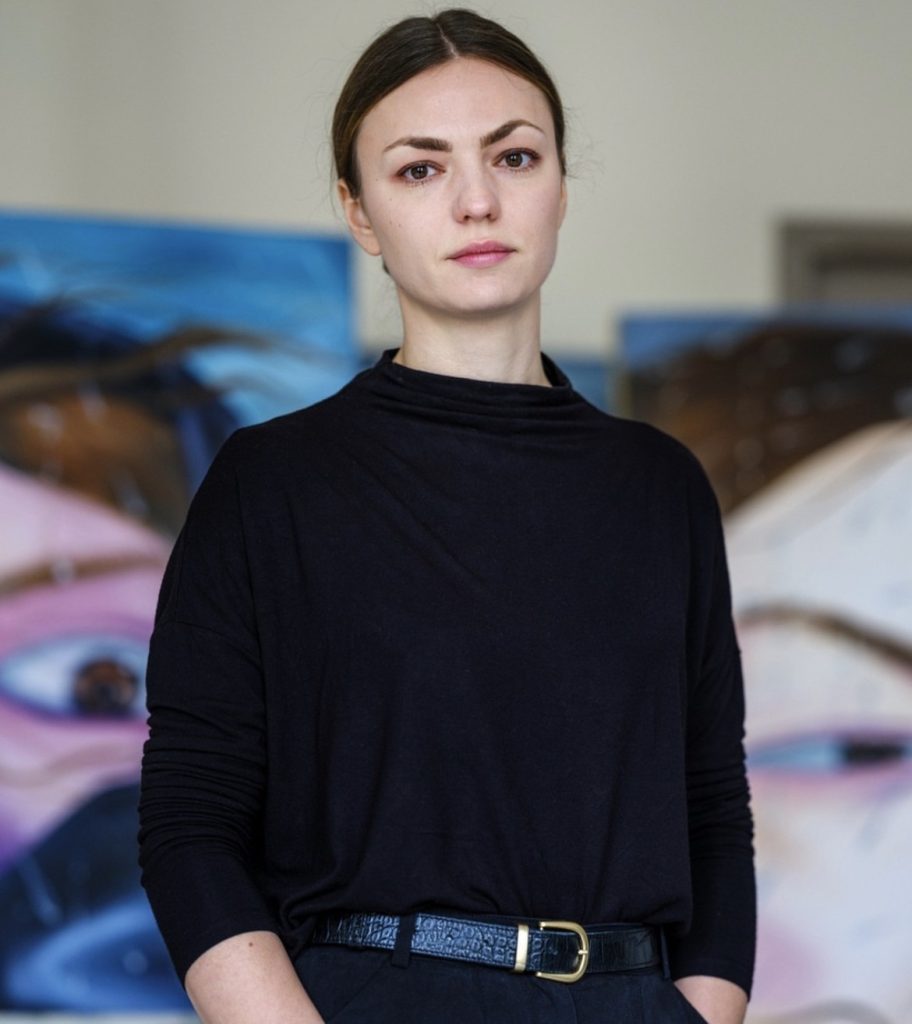
Karolina Jabłońska
is a visual aritst born in 1991 in Niedomice Poland. Lives and works in Kraków. Jabłońska studied at the Academy of Fine Arts in Kraków (2010—2015). Residencies and fellowships include Scholarship in Vysoká škola uměleckoprůmyslová v Praze UMPRUM (2014—2015), LIA Programme Residency, Spinnerei Leipzig (2018), Fern Residency, Brussels (2021), Fores Project Residency, London (2022). Deeply felt and keenly observed, Karolina Jabłońska’s paintings often depict everyday situations that capture the awkwardness of certain common activities. As the artist has put it, “the paintings come from small sensory and emotional impressions.” Yet, the personal is also political: metaphors for emotional states, inherent in these paintings are references to the role of women, the existential threat to their bodies and restrictions imposed by political realities. Monumental depictions of faces—a striking portrayal of her own features that has come to function as a stand-in for the artist but also for a more generalized alter ego—suggest strong emotions but also evoke a visceral response in the viewer. Pairing dramatically distorted points of view and expressive color, the works have an immediacy that is leavened by art historical painterly references and a distinct dry wit.
In 2024, Karolina Jabłońska’s work will be presented in a solo exhibition at the National Gallery of Art in Sopot, as well as in a group exhibition at the Dallas Contemporary Art Museum.
Selected solo exhibitions include: How to be invisible, Esther Schipper Gallery, Berlin (2024) Dinner, Piana Gallery Foundation, Krakoẃ (2023); Cold, Raster Gallery, Warsaw (2022); No rest for the weary, Steve Turner Gallery, Los Angeles (2021). Institutional group exhibitions include: Mainly for Women, SCAD Museum of Art, Savannah (2021); Sensation: Closer to the people, Kunstverein Schattendorf (2019); Paint also known as Blood, Museum of Modern Art, Warsaw (2019).
Institutional exhibitions as part of the artist group Potencja include Potencja – Humoral Theory: Quattro Stagioni, Galeria Bielska BWA, Bielsko-Biała (2022); Potencja – Humoral Theory, BWA Zielona Góra (2021).
Her work is held in the following collections: Grażyna Kulczyk Collection, Mbank Collection, Warsaw; X Museum, Beijing; Museum of Modern Art, Warsaw; National Museum, Gdańsk; The ING Polish Art Foundation and the Steffen Hildebrand Collection/G2 Kunsthalle, Leipzig.
(Biography courtesy of Esther Shipper Gallery)
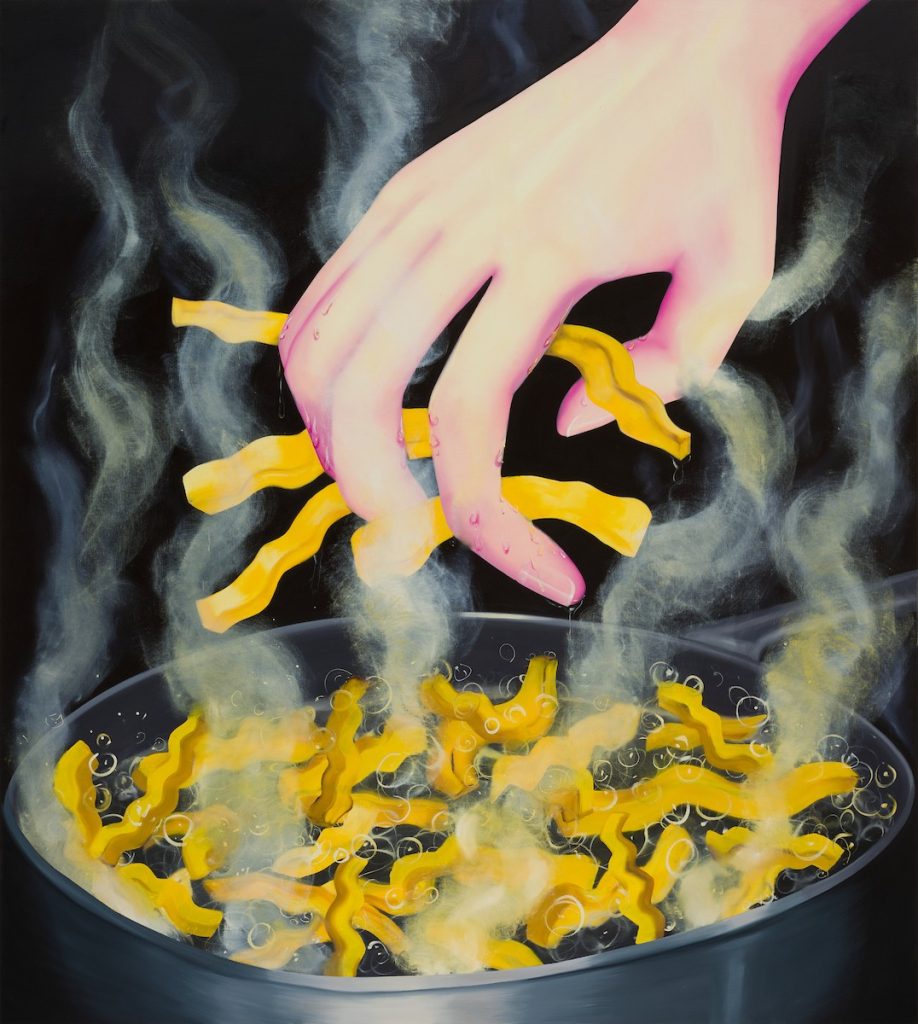
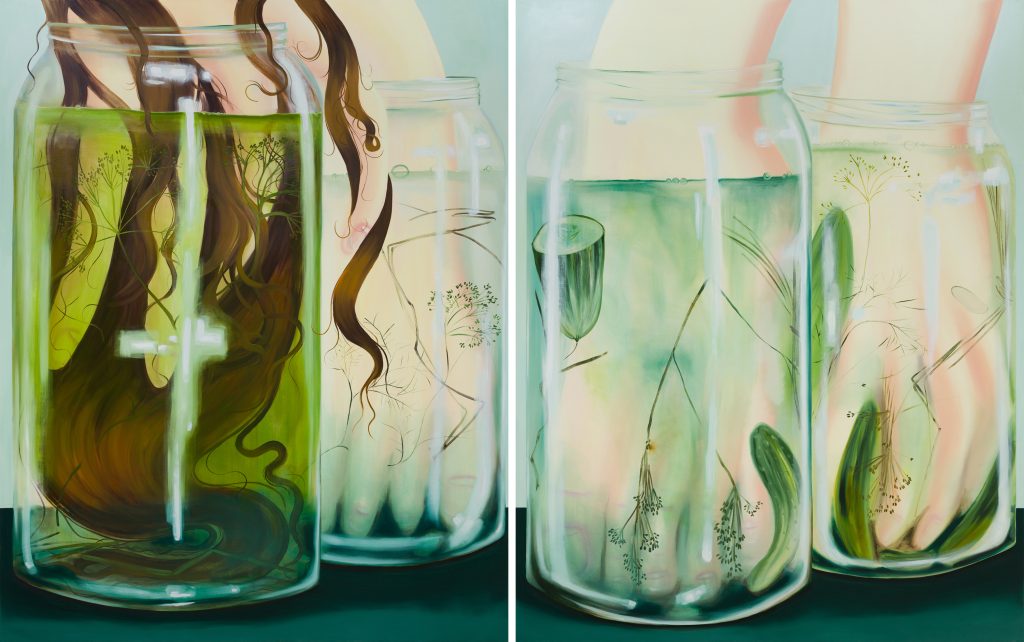
###
About the exhibit Who’s Afraid of Cartoony Figuration?
Beginning in the mid-twentieth century, a distinct lineage of figurative painters emerged that appropriated the visual styles of cartoons, comics, and commercial illustration. This stylistic choice was made at great risk, with the gravitas of the socio-political content at hand oftentimes being obscured or downplayed by the so-called ‘unserious’ cultural associations around their chosen formal language.
Famed Pop artists from the 60s such as Andy Warhol (1928-1987) and Roy Lichtenstein (1923-1997) gained early acceptance for their cultural critique of American popular culture and capitalism, thereby exempting them from suspicion. However, the subsequent generation of painters, operating beyond the “pure” confines of American Pop’s use of cartoony figurative language, was in violation of the established codes of serious figurative representation.
Cartoony Figuration emerged in the 60s and 70s with the Chicago Imagism movements, led by artists like Jim Nutt (b. 1938), Gladys Nilsson (b. 1940), Peter Saul (b. 1934), Roy de Forest (1930-2007), and Joan Brown (1938-1990). In California, Robert Colescott (1925-2009) independently used satirical cartoon-like renderings to tackle social and political issues and explore his own identity. Notably, Philip Guston (1913-1980) shifted to figuration in the late 1960s, facing criticism for his “Hood” paintings in 1970 that addressed political and personal subjects, including the persistent threats of the Ku Klux Klan. Guston’s formal risks and the gravity of his subject matter were initially overlooked and criticized but are now deemed some of the most powerful critiques of American society.
Who’s Afraid of Cartoony Figuration? acknowledges this rich history by examining the work of contemporary artists who have taken up this mantle and explores the ambiguous, subversive content from its “comix” packaging. Unwrapping the complexities that lie beneath the irreverent, populist aesthetics of cartoony figuration, the exhibitions present works by artists coming from different generations, geographies, and practices that have honed their cartoony figuration to address critical subjects of the present day.
Sally Saul (b. 1946, Albany, NY; lives and works in Germantown, NY) creates ceramics and sculptures with playful figures embodying sly politics. Her signature melange of whimsy and sensitivity transpires on her sculptural vignettes which take up images of everyday life as well as more explicit references to current events, and her own lived experience as a woman artist. Saul has lived and worked with the generation of artists from Chicago and San Francisco who have inspired the exhibition’s exploration of Cartoony Figuration. At Dallas Contemporary, Saul will present over a dozen recent sculptures that probe the intersection of everyday life and existential angst with her signature humor and wily feminist subversion.
Tabboo! (né Stephan Tashjian) (b. 1959, Leicester, MA; lives and works in New York) has been a leading voice of the queer underground in New York since the 1980s. His whimsical illustration style—inspired in part by his collection of puppets—was first used for performance posters and flyers for his drag act. Since then, his paintings have mined a range of historical references including ancient Greek motifs, the vibrant visual culture of the Weimar Republic, psychedelic patterns, calligraphic text, punk-collage strategies, and the performative personas of drag, theater, and nightlife. The selection of works presented at Dallas Contemporary spans four decades of Tabboo!’s oeuvre, spanning some of his earliest flyers for drag performances at the cult Pyramid Club in the East Village in the early 1980s, to his distinctive calligraphic text pieces in which he inscribes himself within a cannon of queer cultural luminaries, to more recent figurative paintings that evoke puppet shows featuring animal and human characters that are part of Tabboo!’s personal pantheon.
Umar Rashid also known as Frohawk Two Feathers (b. 1976, Chicago, IL; lives and works in Los Angeles, CA.) has created an epic decolonized history of the Americas in his paintings as well as his poetry, writings and performances. Inserting Black, Brown and First People protagonists into his imaginative alt-history paintings, Rashid has conjured the vast narrative of the Frenglish Empire (1648-1848) in which he recasts the histories of European colonization and autonomous indigenous nations in North America. His visual narratives slyly combine an array of art historical tropes from French, English and Dutch history paintings to the Ledger Drawings of the Plains Indians mashed up with cartoony figurative elements and anachronistic references to contemporary popular culture. Made especially for Dallas Contemporary, Rashid will create a new chapter of his grand historical narrative. Set at the turn of the 18th century, his story will center on a band of Black and mixed race “free radical” rebels in what today is called North-Central Texas, but was then known as Nueva España. In a series of six large scale paintings, this band of roving rebels spread their liberatory struggle and ancient regime change across the landscape, they are depicted encountering Numunuu (Comanche) tribes people as well as European settlers.
###
“I have been trying to smuggle socio-political content into my paintings for a long time, but because I use metaphorical and cartoony language, it’s not always obvious. Literality is something that I want to avoid. I think that’s what cartoony figuration is for: to cover up strong, important, sometimes sad, sometimes unbearable messages, but still deliver them. To express things straightforwardly in art, especially in painting, could be kitschy, but doesn’t have to be. Also, I appreciate the humor in art. Even if the message is heavy, art is an area where you can afford to let off steam.” — Karolina Jabłońska for Patron Magazine, July 11

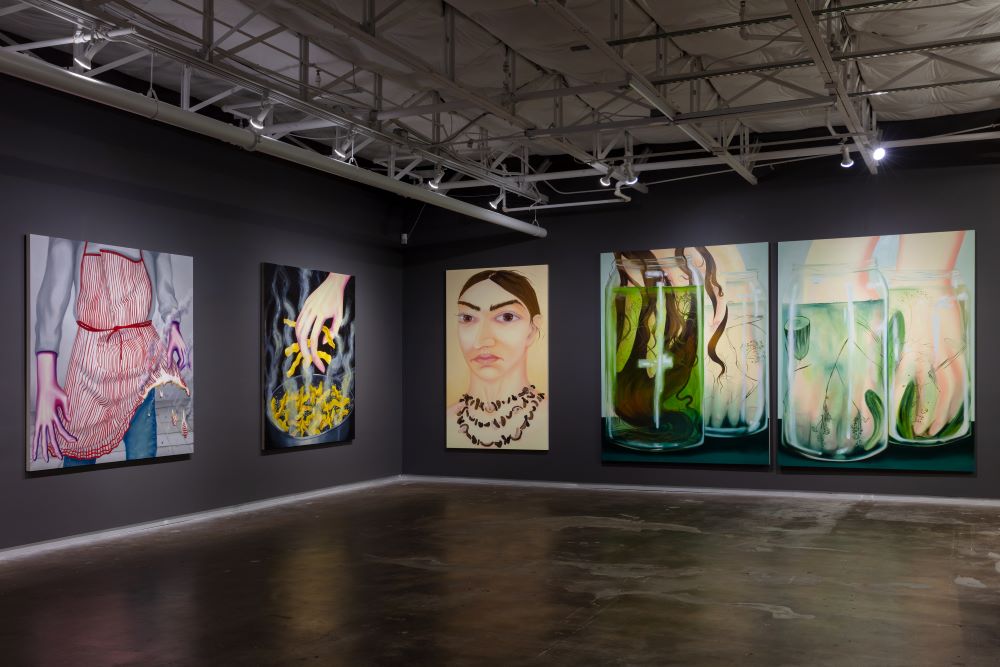
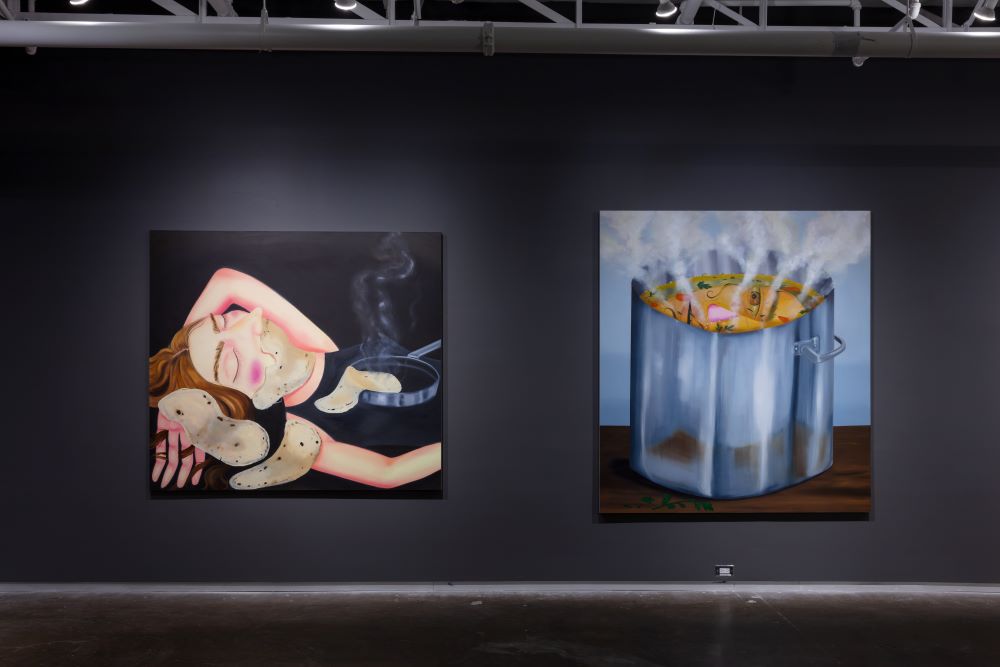
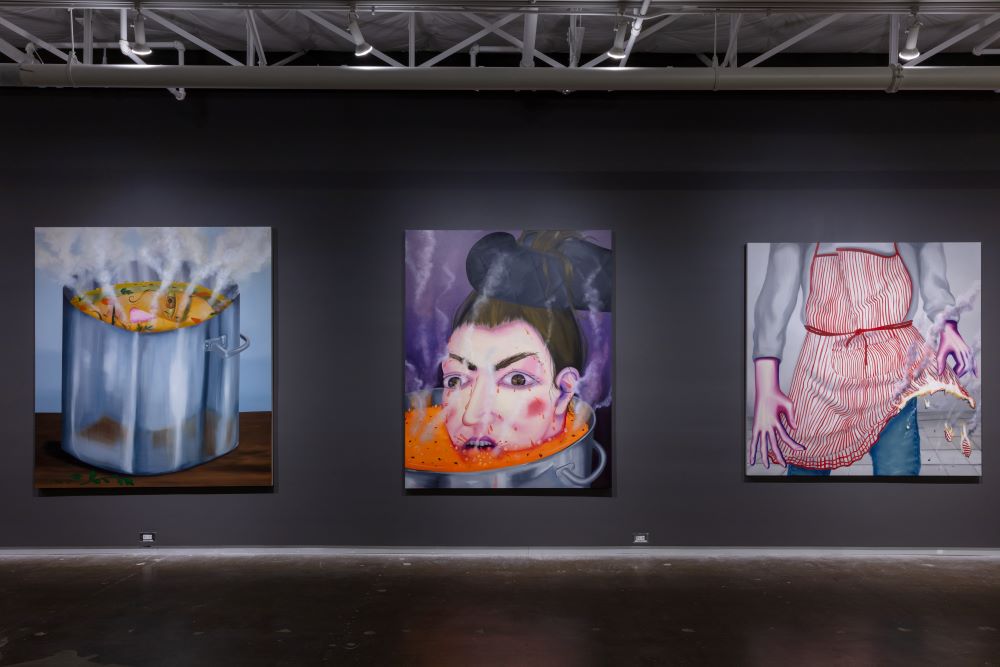
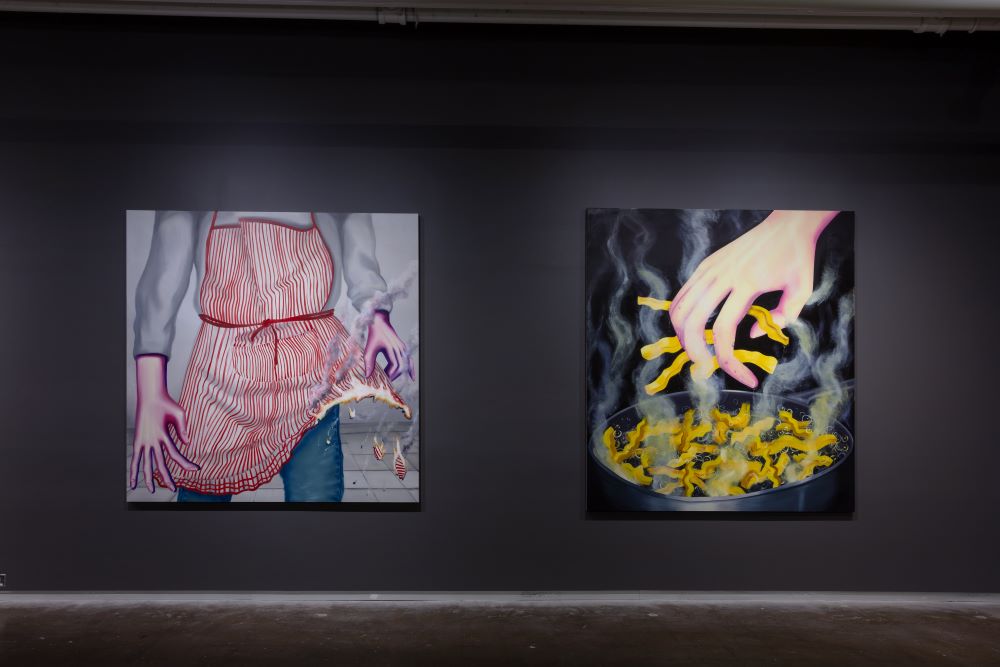
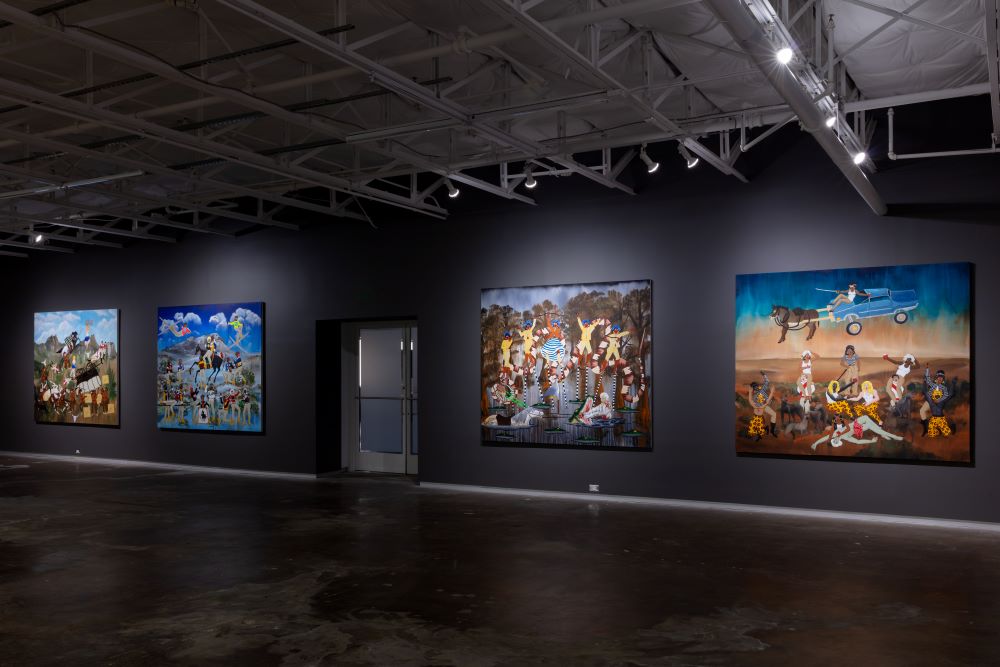
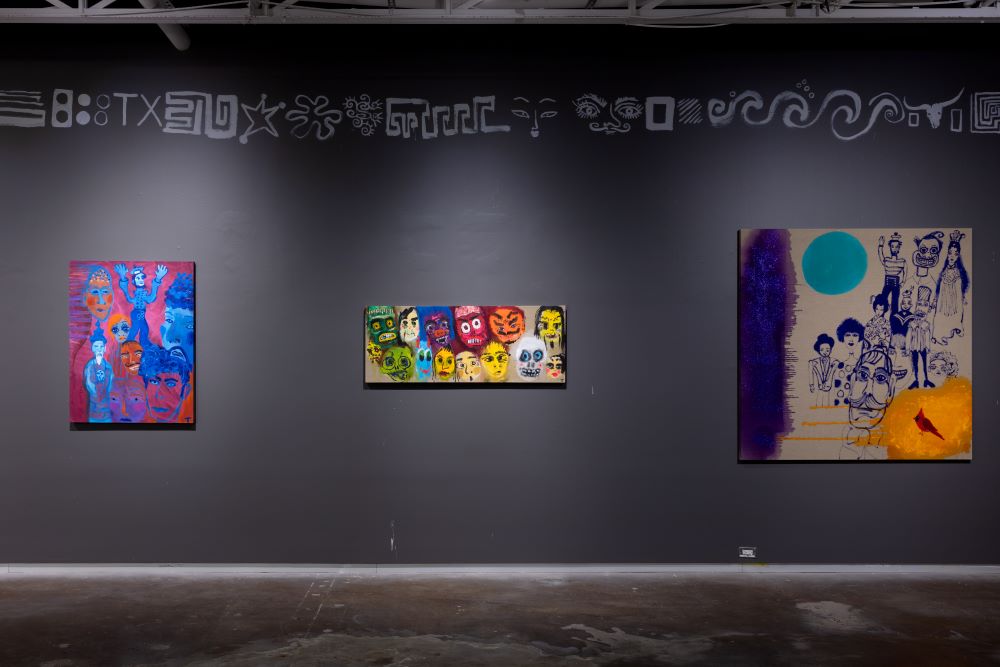
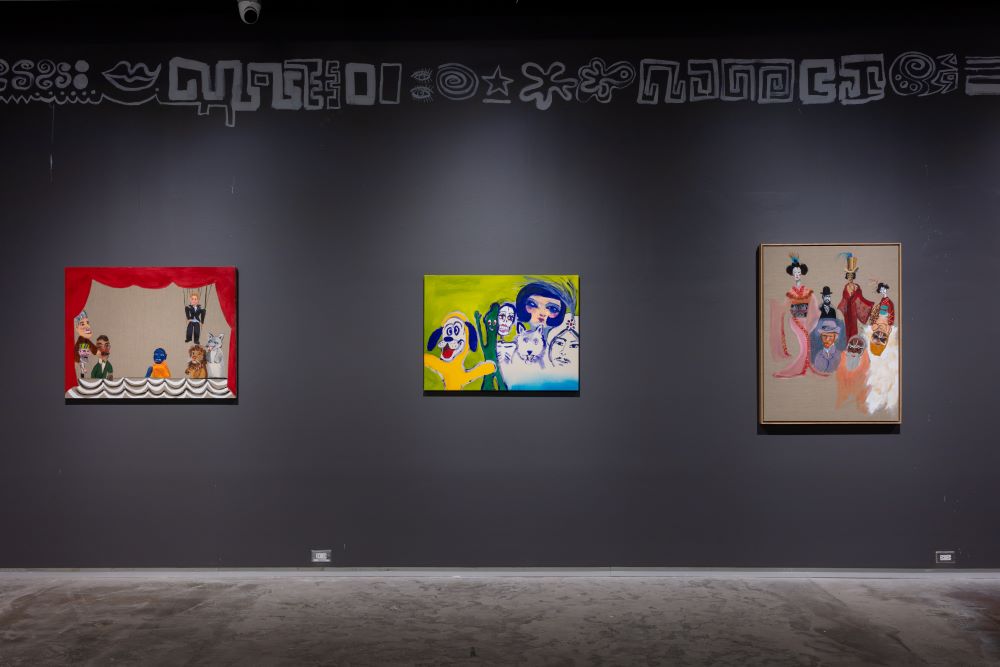
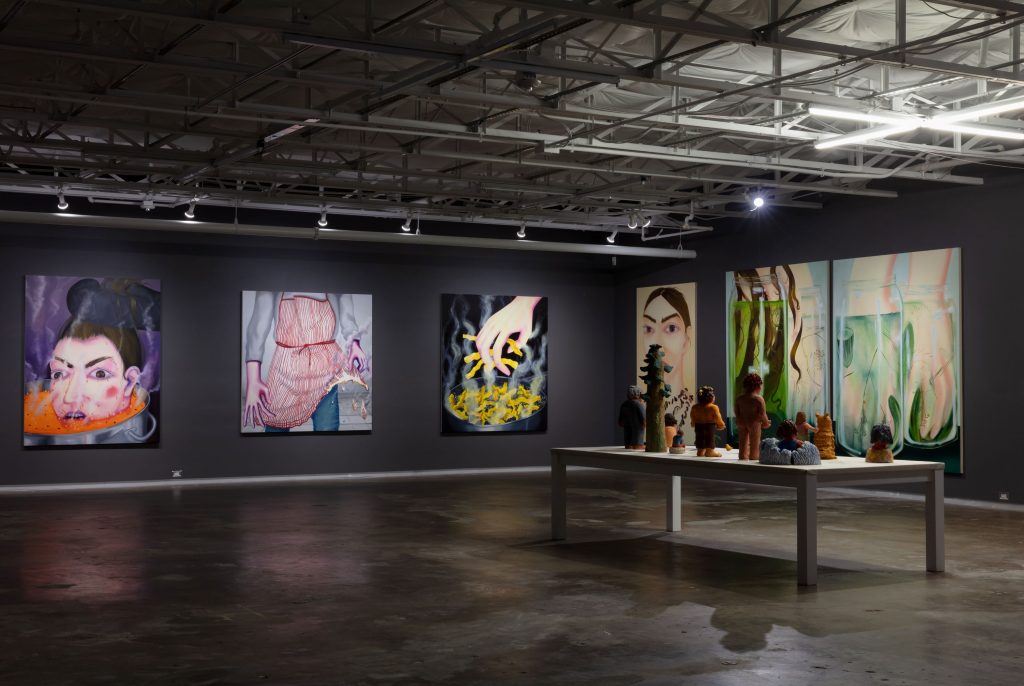
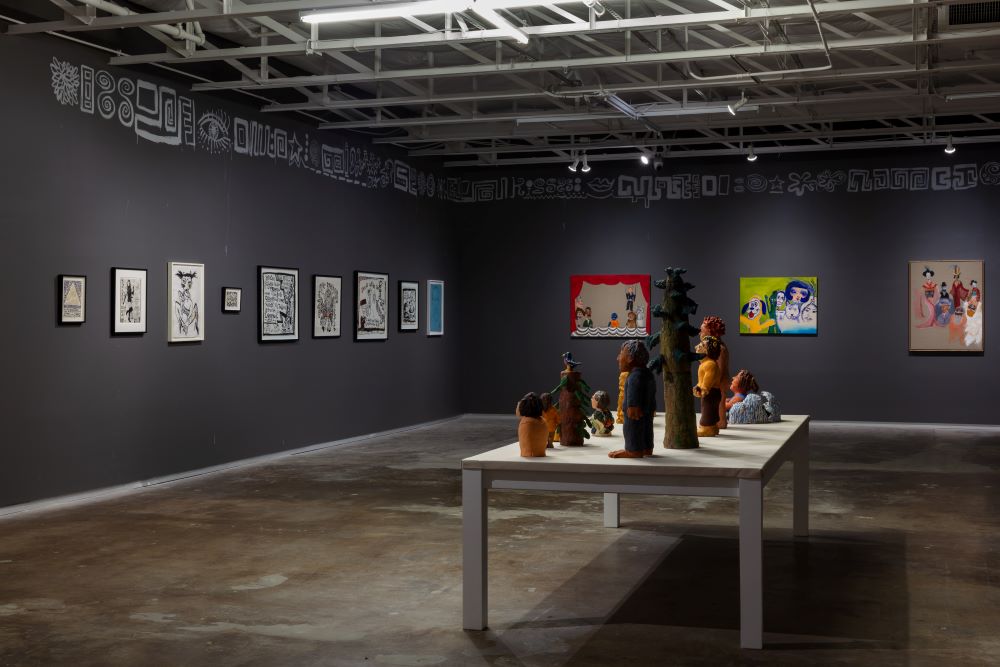
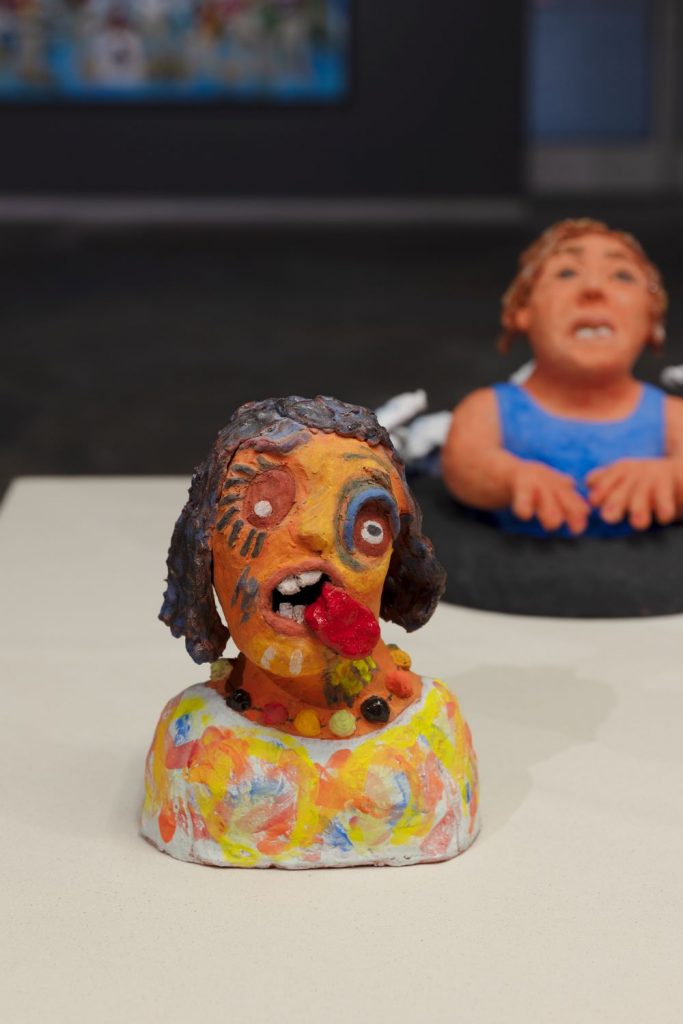
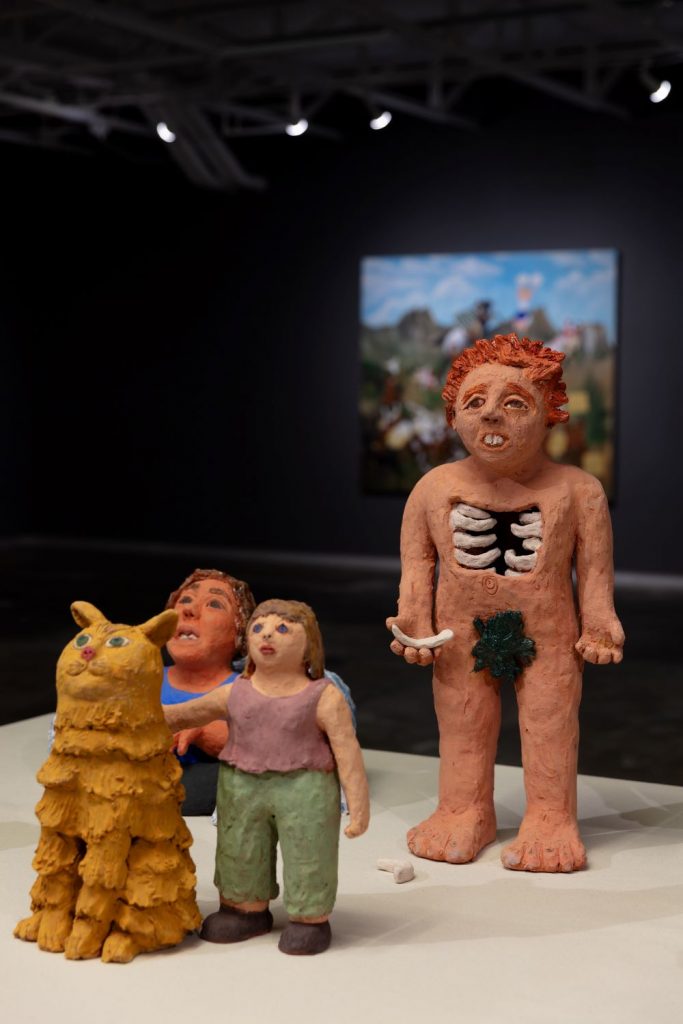
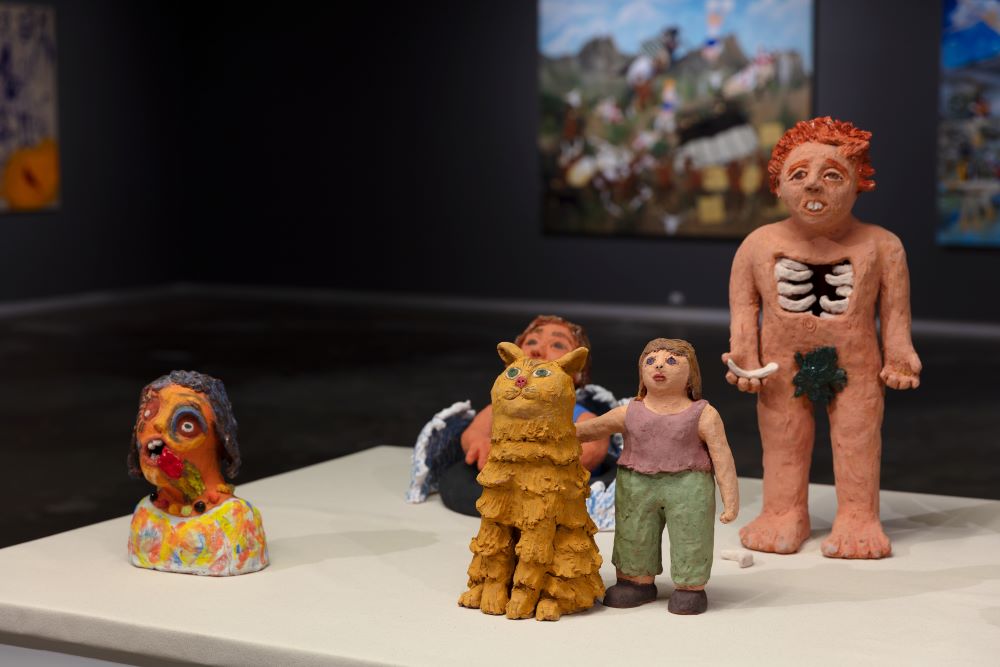
###
ABOUT DALLAS CONTEMPORARY Dallas Contemporary is a non-collecting art museum presenting new and challenging ideas from regional, national and international artists. Located in an industrial building in the Design District, Dallas Contemporary documents new directions in art through rotating exhibitions, publications, public programs, and learning programs for visitors of all ages. As a contemporary arts institution that grapples with timely and complex issues, Dallas Contemporary firmly believes in the power of artists’ ideas and voices to chronicle and transform society. Always different. Always free.
The realization of Who’s Afraid of Cartoony Figuration? is made possible through the generous support of BLUM, Los Angeles/New York/Tokyo; Esther Schipper Gallery; Gordon Robichaux, NY; KARMA; and Venus Over Manhattan, with support provided by the Polish Cultural Institute in New York.
###
Photo credits:
Karolina Jabłońska, portrait author Mateusz Torbus. Courtesy of Esther Schipper Gallery
Main image: Gasburner, 200x160cm, oil on canvas, 2023 photo Mateusz Torbus, Courtesy of the artist
1.Boiling head, 200x160cm, 2023, oil on canvas, fot. Mateusz Torbus, Courtesy of the artist
2. A chicken soup 2023, 200 x 180 cm, oil on canvas photo Mateusz Torbus, Courtesy of the artist
3. Apron 2023, 180 x 180 cm, oil on canvas photo Mateusz Torbus, Courtesy of the artist
4. Pancakes lady, 190x170cm, oil on canvas, 2023 photo Mateusz Torbus, Courtesy of the artist
5. Frying fries, 170x190cm, 2023, photo Mateusz Torbus, Courtesy of the artist
6. Pickels, 240x380cm, oil on canvas, 2023 photo Szymon Sokołowski, Courtesy of the artist



